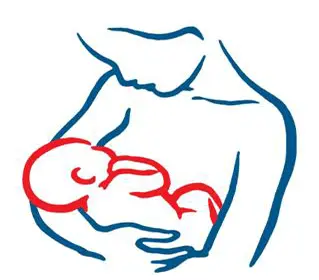Feeding infants with breast milk has been shown to improve baby health and even IQ, but the benefits of breastfeeding also appear to stay with mothers for years to come, lowering risks of cardiovascular disease and cancer
By Katherine Harmon
The benefits of breast milk for babies are numerous. Lower rates of childhood obesity, decreased incidence of asthma and even better brain development are all linked with drinking more of mother’s milk in infancy, and despite decades of research and promising marketing claims, the formula industry has not caught up to mother nature in the milk department.
But even if technicians could develop a better food for infants, researchers are now realizing that skipping the lactation phase would be problematic for mothers’ health. In fact, not breastfeeding after giving birth seems to put women at higher risk for breast and ovarian cancer, diabetes, cardiovascular disease and many other serious health conditions.
The mechanisms behind these increased risks are still being sorted out, but re searchers think that by not engaging in the process that the body prepares for during pregnancy, many crucial systems can go out of whack. And the effects can last for decades after children are weaned.
“The normal physiology is breastfeeding after pregnancy,” says Alison Stuebe, an assistant professor in the Division of Maternal Fetal Medicine at the University of North Carolina in Chapel Hill, who describes breastfeeding as the fourth trimester of pregnancy. When women cannot or choose not to breastfeed, “there are myriad consequences, and we’re just figuring them out,” she says.
This image, based on medical imaging and computer rendering by the Visual MD, reveals the some of the biological systems affected during lactation, many of which are now thought to have lasting effects on a woman’s health.
Costs of not nursing
About 85 percent of U.S. women have at least one child, and based on information about the virtues of breast milk for all those babies, most health agencies recommend that when biologically possible and safe women breastfeed infants exclusively for the first six months with the option of introducing complementary foods in addition to breast milk through 12 months.
Almost three quarters of women in 2005 (the latest year for which data are available) started breastfeeding their infants shortly after birth. By six months, however, only 42 percent of women were still feeding their babies any breast milk at all (with 12 percent still feeding exclusively breast milk at that point). Considering the improved health outcomes for the infants alone, the U.S. could save about $13 billion each year on medical costs if 90 percent of women nursed their infants exclusively for the first six months, according to an analysis by led by Melissa Bartick of the Department of Medicine at Cambridge Health Alliance and Harvard Medical School, published March 2010 in the journal Pediatrics. And that sum says nothing of the money that might be saved on health costs for mothers if they breastfed, which Bartick estimates would be “significant.”
In a study of data from 139,681 postmenopausal women in the U.S., those who breastfed for less than 12 months during their reproductive years had a higher risk for cardiovascular disease, diabetes, hyperlipidemia and hypertension than women who had lactated for more than a year in total. For example, among women who had children, those who did not breastfeed had a 42.1 percent chance of developing hypertension, where mothers who breastfed for at least 12 months had a 38.6 percent chance, according to an analysis led by Eleanor Schwarz, an assistant professor of medicine, obstetrics, gynecology and reproductive sciences at the University of Pittsburgh, and published May 2009 in Obstetrics & Gynecology. For women who never become pregnant, many of their risks seem to be closer to those who have children and breastfed.
Mobilizing mothers’ fat
“Clearly the woman’s body is positioning itself to be able to put out an extra meal for another body, and it just takes saving calories,” Schwarz explains. Producing milk for a single infant requires about 480 extra calories a day. Various analyses have come back with different information of the ability of breastfeeding to help women slim down more quickly after pregnancy. New research presented in March from Schwarz and Candace McClure, a postdoctoral researcher at the University of Pittsburgh’s Department of Epidemiology, found that women who had not breastfed had an average of about seven and a half additional centimeters of fat around their waists (as gleaned from CT scans).
But as Schwarz points out, “not all body fat is created equal.” The fat that tends to accumulate during pregnancy is in part visceral fat, which sits around organs in the midsection and can put people more at risk for heart and other types of diseases. Their CT study also found that, of the 351 women aged 45 to 58, those who had children and not breastfed had 28 percent more visceral fat than those who had consistently breastfed.
Lactating women appear to be better at mobilizing these new fat stores than new mothers who are using formula. And not shedding those extra post-pregnancy pounds may put women at risk for complications in later pregnancies as well as metabolic syndrome and related health problems, Stuebe and colleagues noted in a January 2009 review article published in the American Journal of Perinatology.
One big concern about these additional fat stores is their potential role in upping chances for diabetes later in life. Pregnancy itself can decrease glucose tolerance and raise insulin resistance, hence the prevalence of gestational diabetes. But research is accumulating to suggest that the process of lactation works to re-establish the balance of these key sensitivities. According to a cohort analysis by Stuebe et al., the longer a woman had lactated during her reproductive years, the less likely she was to get type 2 diabetes, regardless of BMI, which can be a risk factor for the disease.
Women who develop gestational diabetes are generally thought to be at higher risk for developing regular diabetes later in life. But new research has shown that this increased risk is significantly lessened for women who breastfeed for more than nine months, Schwarz points out. She adds that being able to tell women who have had gestational diabetes that breastfeeding will lower their chances of getting diabetes later has given her and many of her patients renewed hope for their future health.
Helping heart health
Breastfeeding helps mothers’ cardiovascular health in very specific ways, Schwartz found in her analysis of postmenopausal women.
“Women who reported longer histories of lactation had significantly lower rates of risk factors for cardiovascular disease, even after adjusting for sociodemographic and lifestyle variables, family history and BMI category,” Schwarz and her colleagues concluded in their May 2009 analysis. In fact, those who had breastfed for more than 12 months were about 10 percent less likely to develop cardiovascular disease compared with women who had not breastfed.

Schwarz and others are still trying to figure out why not nursing might lead to hardened arteries and other cardiovascular risk factors. One possible explanation hinges on cholesterol levels, which increase during pregnancy. For mothers who do not breastfeed, levels of triglycerides seem to take longer (by about three months) to reach pre-pregnancy levels. Nursing mothers also seemed to have higher levels of high-density lipoprotein (HDL, or so-called “good cholesterol”) while they were breastfeeding. But these shorter-term effects do not entirely clear up some of the questions surrounding heart disease later in life.
Better long-term heart health for breastfeeding mothers might stem in part from blood pressure, which was “significantly higher” in mothers who had not breastfed than in those who had (120 mmHg and 115 mmHg, respectively), according to the 2010 Schwarz study. Research has suggested that one in 29 cases of postmenopausal hypertension could be avoided if mothers breastfed for at least 12 months during their reproductive years.
Risks for cardiovascular disease in lactating versus non-lactating mothers seem to be firm regardless of BMI, which is usually a factor for both conditions. This finding “indicates that lactation does more than simply reduce a woman’s fat stores,” Schwarz and her colleagues wrote in their May 2009 paper. They proposed that hormonal stimulation is likely playing a substantial role.
The neurotransmitter oxytocin, which is released during nursing, seems to help women get to that “blissed-out state” many women have while breastfeeding, Stuebe says. And this relaxed state of mind can help women cope with all the stresses “that go with being a new mom.” Simply getting the body in the habit of releasing this hormone by frequent nursing can pay off long after weaning. “Moms who breastfeed over long times get really good at releasing oxytocin” at other times, which activates the parasympathetic nervous system and can help alleviate stress later in life, Stuebe says.
Cutting chances of cancer
Perhaps the most well-known maternal benefit of breastfeeding is reduced risks for breast and ovarian cancers. New research is underscoring that link and shedding new light on some of the ways in which not nursing puts some women at higher risk.
For every 12 months a woman breastfed, her risk of breast cancer dropped 4.3 percent, Stuebe and Schwarz noted in a 2010 Journal of Perinatology paper. (Scientific American is part of Nature Publishing Group.) And for women who have a family history of breast cancer, breastfeeding seemed to decrease the risk of getting it, according to an analysis of data from more than 60,000 women led by Stuebe, published August 2009 in the Archives of Internal Medicine. Whereas the potent drug Tamoxifen can reduce risk for those with a mother or sister who had breast cancer by about half, “moms who had breastfed at all had about 60 percent less risk,” Stuebe says. “That’s a pretty significant statistic,” she adds.
The mechanisms behind these statistics remain unclear. Women who had taken medication to suppress lactation also seemed to have a lower risk of developing breast cancer compared with women who gave birth but did not breastfeed, according to recent research by Stuebe and colleagues (though these drugs have questionable safety records). These findings hint that the changes in breasts that become engorged with milk that is not expressed could up the chances for breast cancer down the road.
Ovarian cancer risk also appears to be partially tied in with breastfeeding. When compared with women who had breastfed for at least 18 months, mothers who never breastfed had a 1.5-fold increased risk of developing ovarian cancer, according to one analysis. Another study, published November 2009 in Cancer Causes & Control, found that the protective effect of lactating on ovarian cancer was strongest if women had breastfed their last child.
One hypothesis for the ovarian cancer connection is that small infections that often occur during breastfeeding (known as mastitis) might serve to protect the body against tumors in the future. Antibodies that develop to fight the mastitis would persist in the body, and corollary evidence has shown that women who breastfed but did not have these antibodies were more likely to develop ovarian cancer than those who breastfed and did have the antibodies.
Assessing limitations
Despite the multitude of studies on maternal health outcomes and breastfeeding, many are small or based on methodologies that can fall prey to unintentional biases. “Findings must be interpreted with caution,” Stuebe and her colleagues noted in their 2009 American Journal of Perinatology paper. Although many studies try to control for lifestyle, they asserted, “women who breastfeed are more likely to engage in other healthy behaviors” and these are challenging to fully take into account. There also might be a sort of long-term feedback loop, in which women who were breastfed as infants would be more likely to breastfeed their own children, thus benefiting from both their own early breast milk diet and the effects of lactating themselves, as Schwarz has pointed out.
No matter how many factors researchers have controlled for, confounding variables continue to abound. Big questions about the complex relationship between breastfeeding and obesity remain. Although some studies have tied breastfeeding to faster weight loss, the dynamic is much more complicated. Being obese at delivery has also been linked to difficulty breastfeeding and decreased release of the hormone prolactin, which stimulates lactation, as Stuebe pointed out in her 2009 paper. So teasing out finer elements of causation—and possibilities for mitigation—continues to challenge researchers looking for effective ways to study breastfeeding.
The best way to study the effects of breast and formula feeding on mothers and children would be to design a long-term, randomized controlled trial, which is the research gold standard in many medical fields. But given the accumulated literature on the benefits of breastfeeding, such a trial would be “ethically problematic,” depriving half of the mother-baby dyads, Stuebe and her colleague noted in their 2009 paper.
One subtle but central adjustment in both the research and popular opinion has been to shift the act of breastfeeding from the experimental group to the baseline assessment. “Breastfeeding is the standard to which all other feeding methods should be compared,” Bartick says. “It’s not best, it’s not optimal—it’s just normal.” Although many of the results from studies that use formula feeding as a baseline remain valid, the mindset behind it is overdue for change, she says. When assessed as the norm, breastfeeding should not bestow benefits as much as formula feeding increases risks.

The Qur’an and breastfeeding
1 – Al-Baqarah [2:233] Recite Verse
“The mothers shall give suck to their offspring for two whole years, if the father desires to complete the term. But he shall bear the cost of their food and clothing on equitable terms. No soul shall have a burden laid on it greater than it can bear. No mother shall be treated unfairly on account of her child. Nor father on account of his child, and heir shall be chargeable in the same way, if they both decide on weaning, by mutual consent, and after due consultation, there is no blame on them. If ye decide on a foster-mother for your offspring there is no blame on you, provided ye pay (the mother) what ye offered, on equitable terms. But fear Allah and know that Allah sees well what ye do”.
Allah said in the holy quran : ” The mothers shall give suck to their offspring for two whole years, if the father desires to complete the term” ( SURAH ABAQARAH:233)
Allah’s Messenger (my peace be upon him) said “You must nurse your baby even with your tears.” as he recommended Asmaa Bent AbI Bakr (may God be pleased with him) to nurse her baby at the breast.
What has been mentioned above assures that women should nurse their babies at breast, without using any other method such as the artificial suckling, cow’s milk or others. This raises the argument about the reason for this.
Comparing the natural suckling to artificial one proved the following:
1. The milk’s composition: The composition of mother’s milk changes from feeding to another depending on the nutrient needs of the newborn, its endurance, and what suits its instinct and body’s organs, which develop day after day. In the contrast, the artificial milk has a constant composition. For instance, the breast releases colostrum in the early days of lactation which contains many times as much protein and mineral element as the artificial milk. But mother’s milk has poor cream and sugar, besides to the antibodies which sustain the baby’s immunity. So, it is the perfect nutrition for the baby. The production of the breast milk’s density decreases from feeding to another in natural way to displace the gastrointestinal tract of the baby then it changes to fulfill the baby then it changes to fulfill the child’s needs.
2. Digestion: The mother’s milk is easily digested because it contains digestive enzymes that aid the child’s stomach enzymes in this process. The stomach gets rid of its content through one hour and half .Besides, the gastric acidity becomes normal and proper to kill germs that reach it, while it takes time in digesting the cheese’s curdles of cow’s milk up to 3 or 4 hours. Salts, which exist in cow’s milk, modify and decrease the gastric acidity. This allows germs especially the colonic ones to reproduce then they cause diarrhea and vomit.
3. Cleaning (purging): Mother’s milk is pasteurized while the artificial milk is contaminated with bacteria as this occurs through the process of milking or when the bottle is contaminated.
4. The temperature of mother’s milk is constant and proper for the child’s. The mother’s milk is always the right temperature and it suits the child’s temperature, while it is not always available in the artificial milk.
5. Breast feeding is less expensive and even it costs nothing to mention economically.
6. The mother’ milk contains variety of autoimmune antibodies that aid in the development of baby’s immune system against diseases. The varieties of autoimmune antibodies are much less existed in cow’s milk .It is proved that breast fed babies are less exposed to have skin infection than bottle fed ones.
7. The breastfeeding supports the natural bacteria that exist in the intestines. It has an effective role in absorbing vitamins and others nutrient elements, while the artificial milk irritates the natural bacteria.
8. Cow’s milk causes the effects of non endurance and sensitization, while it is not found in breastfeeding cases. These effects are diarrhea, colick, black stool and the symptoms of the common sensitization. Breast fed babies have less chance of having stomach ach and eczema.
9. The acceptance of having different diseases: Bottle-fed babies are much more expected of affecting with different ailments such as aspiratory tracts infection and chronic atlactesis which is connected to the sediment of the milk’s protein in the child plasma. While omitting the cow’s milk from the child’s feeding leads to his recovery from disease. Bottle feeding in creases babies risk of otitis media because when he makes first swallowing after suckling, lying on his back, the eustachian tube opens, so the milk and saliva go through the ear causing the otitis media. Having pyorrhea and the inflammation of the supporting tissues around the tooth are increased by 3 times more than the breast fed babies, besides to they don’t suffer from laryngeal spasms. These differences explain why the death rate among bottle fed babies increases to about 4 times more than the breast fed babies. Despite today’s technology which have been added to the way of preparing the milk in artificial ways and to the way of giving it to the baby.
The way of suckling and the turning benefits for mother:
Suckling at the breast is always in the interest of mother because of many things. Firstly, baby’s suckling helps shrink mother’s uterus after childbirth as a result of suckling the nibble. So, it helps the uterus to back more quickly to its pre-pregnancy size. This helps prevent post-partum hemorrhage in mother.
Secondly, breastfeeding mothers have less risk of developing breast cancer than bottle feeding moms. It is more common among virgins, non breastfeeding moms and women who have fewer children, so more lactation, less chance of cancer. Thirdly, suckling at breast is the perfect and the natural way of birth control. It encourages longer amenorrhea (periodlessness) naturally. It contributes to optimum child spacing or birth control, as it prevents using tablets, injections, or loop. Its mechanism lies in the action of the nipple’s suckling which stimulates the release of the hormone prolactin from the anterior lobe of pituitary gland. The prolactin stimulates the ejection in the glandular tissue in the breast to decrease the releasing of gonadtrophic that is responsible of the changes during the menstrual cycle. This occurs for 60% breastfeeding women.
Lactation and spiritual bond:
The maternal lactation strengthens the bonding and the emotions between mother and her new baby, as well as it makes the mother more passionate on her baby .This bond is the only guarantee for mother to take care of her baby by her own, because lactation is not just a concrete process but a sacred relationship between two creatures. Lactation satisfies woman’s need of being a mother and responsible for bringing up a little child as it works as growing a plant in her life’s orchard, besides to the overwhelming happiness that she obtain.
Breastfeeding satisfies the baby’s psychological and emotional needs and makes him pleasant and happy .There no more comforting feeling than being held close to his mother’s heart beats, hearing its soft melody that provides him with tranquility and security ,besides to latching at her breast following by falling into sleep in peace.
This strong bond could be weakened for bottle fed babies. It becomes worst when someone else than the mother takes care of the baby such as a maid or a baby sitter .By this way the child loses the normal peace, the most important thing for his early years, to achieve sound and affective interaction .The little baby has a strong personal relationship with the person who supplies nutrition, warm and comfort. So, it is necessary for mother to be this person.
Recently, WHO (the World Health Organization) and UNICEF (United Nations International Children’s Fund) state that breastfeeding should last for two years. They addressee the all mothers allover the world to follow their recommendations. An article was published in Pediatric Clinics of North America, an American magazine, issued in February 2001, calls the American women to follow the recommendations of the Pediatric Academy of America. They recommend having the babies nursed at breast for 12 months as a minimum period, but it is preferable to follow the instruction of WHO.
These statements were miraculously stated by the Qur’an 14 centuries ago. Allah obligates mothers to nurse their babies at breast up to two years. God, to whom be ascribed all perfection and majesty, knows that this duration is the best from all sides of health and psychology. Today’s researches of health and medicine have proved the necessity of a two year breastfeeding to have a sound growing up baby. God has mentioned this in the holy Qur’an before the human beings discover it lately. This is a sign of God’s mercy on his people, especially those innocent children.
The modern studies assure that the consumed mother’s milk is prophylactic against many bacterial inflammations. Lactation reduces the risk of leukemia for children. The longer the baby was breastfed, the higher was the rate of prophylaxis against such kinds of cancers. That is not only everything but it also protect from lymphoma or the cancer of the lymph system.
Moreover, a research, from Pediatric Clinics of North America of the same issue, has found that the kids who had consumed mother’s milk have a significantly higher IQ than those who have no maternal milk. Also, this was heightened by the observation that the longer the baby was breast fed, the higher the IQ through the all years of life.

